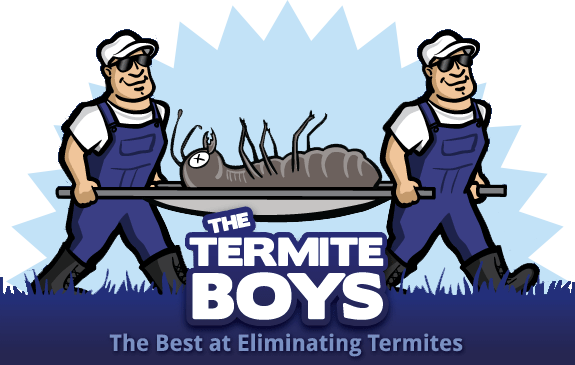1. What are Eastern Subterranean Termites?
Eastern Subterranean Termites, scientifically known as Reticulitermes flavipes, are small, pale insects that live in underground colonies. They are highly organized social insects, with a caste system comprising workers, soldiers, and reproductives. These termites are commonly found in the eastern parts of North America and are considered one of the most destructive termite species.
2. Life Cycle of Eastern Subterranean Termites
The life cycle of Eastern Subterranean Termites begins when winged reproductives swarm during the spring or early summer months. After mating, they shed their wings and establish new colonies. The reproductives become the king and queen of the colony, producing eggs that hatch into larvae. The larvae then develop into workers or soldiers, while some may become supplementary reproductives. This cycle continues, leading to the growth and expansion of the termite colony.
3. Signs of Infestation
Detecting an Eastern Subterranean Termite infestation early is crucial for minimizing damage. Look out for the following signs:
– Mud Tubes
Subterranean termites construct mud tubes, pencil-sized tunnels, to protect themselves from dry conditions and predators. These tubes can be found along foundation walls, crawl spaces, or in basements.
– Wood Damage
Eastern Subterranean Termites feed on wood from the inside out, leaving a thin layer of wood or paint on the surface. If you notice hollow-sounding or sagging wood, it could be a sign of termite activity.
– Discarded Wings
After swarming, termites shed their wings. Finding discarded wings near windowsills or light fixtures indicates the presence of a nearby termite colony.
4. Damage Caused by Eastern Subterranean Termites
Eastern Subterranean Termites pose a significant threat to homes and structures. They can silently devour wooden components, including floors, walls, and furniture. Over time, this can weaken the structural integrity of a building and lead to expensive repairs. It’s estimated that termites cause billions of dollars in damages annually.
5. Prevention and Control Measures
Preventing an Eastern Subterranean Termite infestation is key to protecting your home. Here are some effective preventive measures:
– Moisture Control
Termites thrive in damp environments. Fix any leaks, improve drainage, and ensure proper ventilation to reduce moisture levels in and around your home.
– Remove Wood-to-Ground Contact
Avoid direct contact between soil and wooden structures. Use concrete or metal barriers to prevent termites from accessing the wood.
– Regular Inspections
Schedule regular termite inspections by professionals to detect signs of infestation early and implement appropriate treatments.
– Termite Bait Systems
Bait systems are an effective way to monitor and control termite populations. These systems use termite-attracting baits that are shared within the colony, eventually leading to its eradication.
6. Professional Termite Inspection and Treatment
For severe infestations or for peace of mind, it’s advisable to seek professional help. Certified termite control experts have the knowledge, experience, and tools to accurately identify and treat termite infestations.
7. Natural Remedies for Termite Control
If you prefer environmentally-friendly approaches, several natural remedies can help deter termites. These include using orange oil, neem oil, borax, or a vinegar-water solution as deterrents or in localized treatments. However, natural remedies may be less effective for severe infestations.
8. How to Choose the Right Termite Control Company
Selecting a reputable termite control company is essential for effective eradication and prevention. Consider the following factors when choosing a professional service:
– Experience and Expertise
Look for a company with a proven track record in termite control and inspections. They should have certified technicians who are knowledgeable about termite behavior and treatment methods.
– Licensing and Insurance
Ensure the company is licensed and insured. This protects you in case of any damage or liability during the termite treatment process.
– Customer Reviews and References
Read online reviews and ask for references from previous clients. A reputable company will have positive feedback and satisfied customers.
9. DIY Termite Prevention Tips
While professional help is recommended for severe infestations, here are some DIY tips to help prevent termite infestations:
– Regular Maintenance
Keep your home well-maintained, addressing any moisture issues, leaks, or wood damage promptly.
– Remove Wood Debris
Dispose of any wood debris, such as fallen branches or tree stumps, from your property. These can attract termites and serve as a potential food source.
– Secure Entry Points
Seal any cracks, gaps, or openings in your home’s foundation, walls, or roof to prevent termite entry.
10. Termite-Resistant Building Materials
Using termite-resistant building materials during construction or renovations can act as a deterrent. These materials include treated lumber, concrete, metal, and certain types of hardwood.
11. Landscaping to Minimize Termite Risk
Strategic landscaping can help reduce the risk of termite infestations. Consider the following tips:
– Maintain Distance
Ensure plants and shrubs are at least a few feet away from your home’s foundation. This minimizes the chances of termites bridging from the soil to the structure.
– Proper Mulching
Use non-wood mulch, such as rubber mulch or gravel, instead of wood-based mulch near your home. Wood-based mulch provides an attractive food source for termites.
12. Insurance Coverage for Termite Damage
Most homeowner’s insurance policies do not cover termite damage. However, it’s worth reviewing your policy or contacting your insurance provider to understand the extent of your coverage. Some insurers offer separate termite damage coverage as an add-on.

